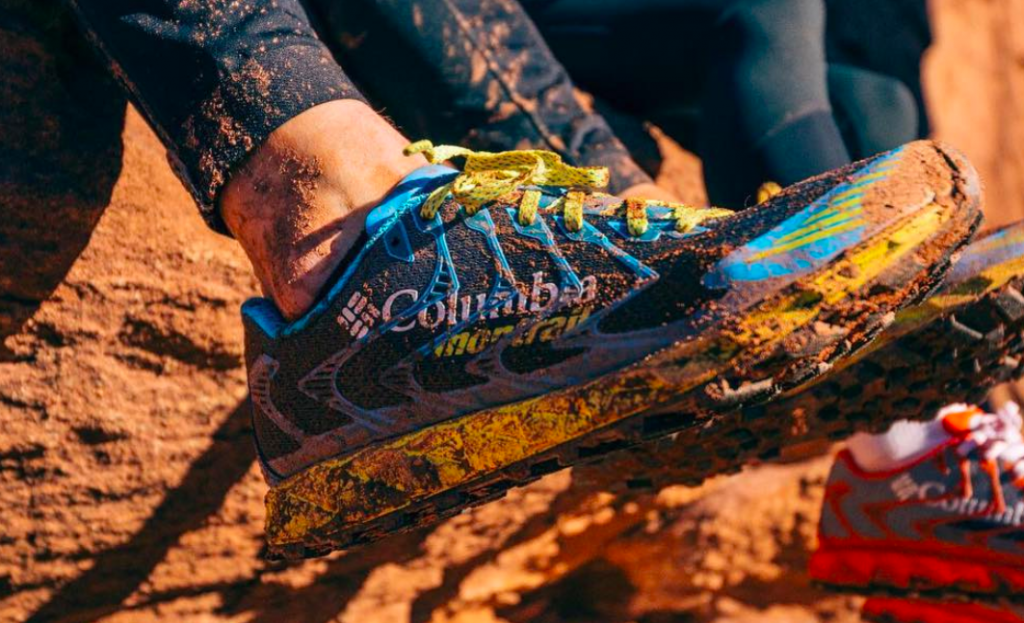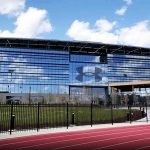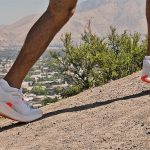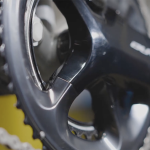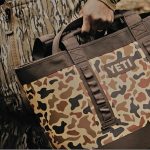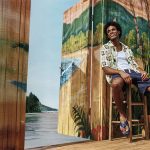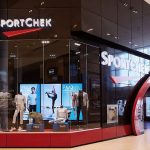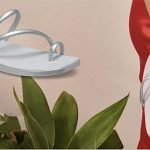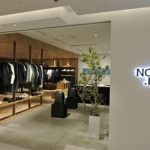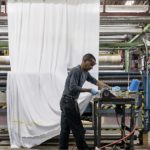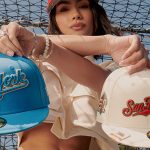Helped by accelerating momentum in the U.S. region, Columbia Sportswear reported a better-than-expected fourth quarter and 2017 results that saw revenue, gross margin, operating income and cash generation all reach record levels.
In the quarter, Columbia Sportswear showed a loss of $7.07 million, or 10 cents a share, due to incremental income tax expense related to tax reform. On an adjusted basis, non-GAAP EPS was $1.31, compared to $1.20 in the prior year quarter and ahead of Wall Street’s consensus estimate of $1.11.
Sales rose 8.2 percent to $776.0 million, surpassing the consensus target of $761 million.
On a conference call with analysts, president and CEO Tim Boyle noted that the company’s U.S. business saw a mid-single digit percent sales decline in the U.S. wholesale channel for 2017, with nearly two-thirds of the decrease resulting from the impact of retail bankruptcies.
“However,” Boyle added, “in the fourth quarter, the U.S. wholesale channel played a significant role contributing to our top line beat relative to our October outlook, aided by improved order conversion.”
Sales in the U.S. rose 8.2 percent in the quarter to $492.6 million and advanced eight percent on a currency-neutral basis. Direct-to-consumer (DTC) net sales increased low-double-digit percent, driven by brick and mortar store net sales growth and modest e-commerce growth, reflecting the strategic decision to reduce promotional activity relative to the fourth quarter of 2016. Wholesale net sales increased 6 percent, with benefits from a shift in the timing of shipments of fall 2017 advance wholesale orders from the third quarter into the fourth quarter, and improved order conversion of fall 2017 product, partially offset by the comparative effects of sales to U.S. wholesale customers who have undergone bankruptcies, liquidations and store closures, as well as more limited closeout sales as a function of reduced levels of excess inventory.
Looking forward to 2018, Boyle said the company anticipates that the U.S. wholesale channel will return to growth, reflecting visibility into its spring and fall order book.
“Our U.S. Columbia wholesale team is managing the industry’s challenges proactively with a particular focus being placed on key markets in the Midwest and South. We continue to believe that the Columbia brand is gaining U.S. wholesale market share in a challenging environment and that wholesale channel inventories are generally healthy,” said Boyle.
He added, “We’ve accelerated investment in our U.S. direct-to-consumer business, which grew at a double digit percentage rate in the fourth quarter and a high-single digit percent rate for 2017. The brick and mortar channel drove sales growth with improved productivity while we made the strategic decision to reduce online promotional activity relative to last year driving modest growth in our e-com business.”
During the fourth quarter of 2017, the company operated 129 U.S. retail stores (105 outlet; 24 branded) and four branded e-commerce sites, compared with 118 stores (93 outlet; 25 branded) and five branded e-commerce sites during the same period in 2016.
In other regions, Boyle described said EMEA “remains a standout.”
In the EMEA region, sales increased 19.1 percent to $83.5 million and gained 14 percent on a currency-neutral basis. Europe-direct net sales increased high-20 percent–high-teens percent constant-currency–and were driven by increased fall 2017 advance wholesale orders and reorders as well as increased DTC sales. EMEA distributor net sales increased mid-single-digit percent, largely due to shipments of increased spring 2018 advance orders to its Russian distributor.
“We’re particularly pleased with the performance of our Russian distributor who has navigated the challenges of that market effectively, returning to significant growth in 2017,” said Boyle. He claimed that after achieving breakeven profitability in 2016, the Europe-direct business “returned to a meaningful level of profitability” in 2017.
In the LAAP region, sales inched up 1.6 percent to $154.3 million and added three percent on a currency-neutral basis. LAAP distributor net sales increased high-single-digit percent, driven by a shift in the timing of spring 2018 advance orders from the first quarter of 2018 into the fourth quarter of 2017 relative to the fourth quarter of 2016.
China’s net sales increased low-single-digit percent (essentially flat constant-currency) with e-commerce growth partially offset by wholesale declines reflecting increased sales returns following the strategic decision to transition its Beijing wholesale business to new dealers in order to revitalize growth in the Beijing market.
Japan’s sales increased low-single-digit percent (mid-single-digit percent constant-currency), driven by DTC growth, offsetting a slight wholesale decline. Korea net sales were essentially flat (low-single-digit percent net sales decline constant-currency).
In Canada, sales advanced 14.0 percent to $45.6 million and grew nine percent on a currency-neutral basis. DTC net sales increased low-20 percent–mid-teens percent constant-currency–as a result of growth in both brick and mortar stores and e-commerce. Wholesale net sales increased low-double-digit percent–mid-single-digit percent constant-currency–due to increased fall 2017 advance wholesale orders.
By brand, Columbia Brand’s sales rose 9.1 percent in the quarter to $602.4 and grew nine percent on a currency-neutral basis. Columbia Brand sales increased in all regions, led by the U.S. and Europe-direct. U.S. DTC net sales were up low-double-digit percent, while U.S. wholesale net sales increased mid-single-digit percent driven by a shift in timing of fall 2017 advance wholesale orders from the third quarter into the fourth quarter and improved order conversion. Europe-direct sales growth was driven by shipments of advance fall 2017 orders and wholesale reorders.
Boyle said the Columbia brand is being helped by the installation and refurbishment of over 300 Columbia shop-in shops and elevated brand presentations at key partner stores around the world. The brand is also partnering on campaigns with Dick’s Sporting Goods and the merged Bass Pro/Cabela’s on its “Directors of Toughness” and “Columbia Warm” campaigns. He said the two campaigns had together generated over 50 million consumer impressions.
Other efforts gaining attention for Columbia Brand include its outfitting deal with the U.K. National Parks; a partnership featuring actor Zac Efron and his brother, Dylan; and product collaborations with Star Wars and the New York based fashion retailer Opening Ceremony. NBC Sports announcers wore Columbia product on air during the Super Bowl in Minnesota and will be wearing the brand throughout the Winter Olympics.
At Sorel, sales grew 9.7 percent in the quarter to $113.9 million and advanced 8 percent on a currency-neutral basis. Sales increased in U.S. wholesale, driven by a shift in the timing of fall 2017 advance wholesale orders from the third quarter into the fourth quarter, and higher closeout sales. Sorel’s sales also increased in Europe-direct, supported by increased demand for cold-weather product. Sorel’s sales grew 7 percent in 2017.
A win for Sorel included the limited-edition boot collaboration with Paris-based luxury design house Chloé that reached Nordstrom, Galeries Lafayette, Barneys and Holt Renfrew. Sorel’s fall marketing campaign, “Defy,” is being backed by street-level window executions across New York City as well as by extensive social media outreach with key influencers. Said Boyle, “The brand is positioned for continued growth in 2018.”
At Prana, revenues grew 7.8 percent in the quarter to $30.4 million and was up 8 percent currency-neutral, driven by U.S. e-commerce. That marked an acceleration versus the growth of 1 percent seen for the year. Russ Hopcus, Columbia’s former SVP of North American sales, was promoted to Prana’s president. Said Boyle, “I’m confident in Russ and his team’s ability to magnify Prana’s message of sustainability and healthy active free-spirited lifestyle to drive growth.”
Mountain Hardwear’s sales fell 9.3 percent to $28.4 million and was down 1 percent on a currency-neutral basis. The decline was primarily a result of a net sales decline in U.S. fall 2017 advance wholesale orders, partially offset by increased closeout sales, and a net sales decline in Korea.
Boyle said Mountain Hardwear’s new brand president, Joe Vernachio, continues to build out the new product team and is gaining some traction in the marketplace. Said Boyle, “While we do expect continued pressure on the Mountain Hardwear business in 2018, we are encouraged by return to growth in the brand’s fall 2018 order book. Response to new product has been favorable, with the brand recapturing floor space in several key accounts.”
Helping support the bottom line were gross margins in the fourth quarter expanding 80 basis points to a record 47.9 percent, primarily reflecting a favorable sourcing environment resulting in lower product input costs for fall 2017, a higher proportion of higher margin full-price versus closeout product sales and a higher proportion of DTC net sales, which generally carry higher gross margin.
SG&A expenses increased 11 percent due to increased expenses related to the company’s expanding global DTC businesses, its Project CONNECT program and discrete expenses, increased demand creation spending and increased incentive compensation. As a percent of sales, SG&A was 34.4 percent, up from 33.6 percent.
Excluding $6.3 million in Project CONNECT program expenses and discrete costs, non-GAAP SG&A expenses increased eight percent and would have been 33.6 percent of sales, the same ratio as the year-ago period. Said Boyle, “We remain intensely focused on cost discipline while investing in growth areas of our business.”
For the year, sales grew 3.7 percent to $2.47 billion. Earnings fell 45.2 percent to $105.1 million, or $1.49 a share, from $191.9 million, or $2.72, a year ago. Non-GAAP reached $2.98, up from $2.72 in the prior year.
The company ended the year with inventories down six percent on eight percent sales growth.
“Our inventories are clean, including a year-over-year decline in excess and closeout inventory,” said Boyle. “Our balance sheet remains extremely strong with record cash from operations helping drive cash balances to a record $768 million. We continue to have no long-term debt.”
In light of rising cash balances and strong cash flow generation, Columbia’s board approved a quarterly dividend increase of 16 percent, which comes in addition to the 6 percent increase in the quarterly dividend that were announced in October.
For the current year, Columbia expects sales growth between 5.5 percent and 7.5 percent on a GAAP basis and 4.0 percent and 6.0 percent on a non-GAAP basis. Net income is expected to arrive in the range of $2.88 and $2.98 on a GAAP basis and between $3.17 and $3.27 on a non-GAAP basis.
Boyle said the gains are expected to be driven by the Columbia, Sorel and Prana and in all four of its geography regions.
While the company is in the midst of the fall advanced order-taking process, Boyle said the company is “optimistic that we will continue to generate global growth and that our U.S. wholesale business will return to growth in the first half of 2018 with our spring business and carry that growth into the fall season. When combined with the continued growth that we expect from our DTC businesses, both the first half and second half of 2018 should show solid growth.”
Photo courtesy Columbia Sportswear

